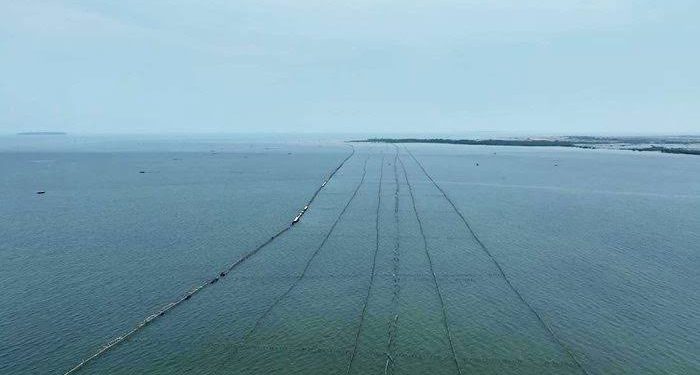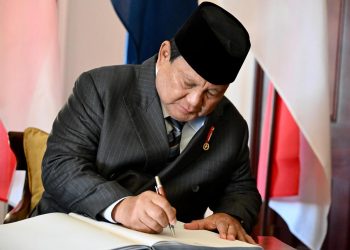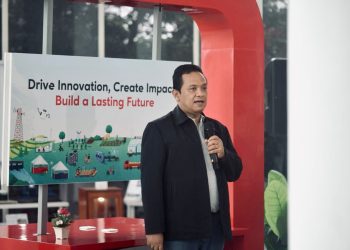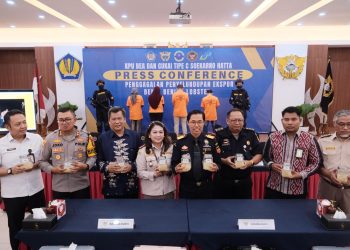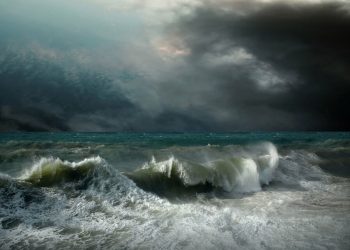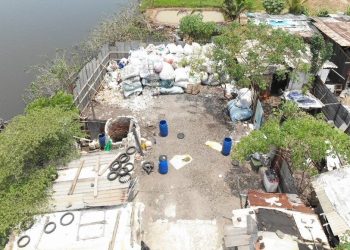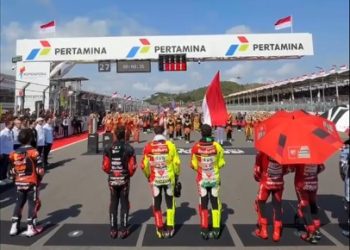Banten, Indonesia Sentinel — The Indonesian Ministry of Maritime Affairs and Fisheries (KKP) has spoken out regarding the mysterious 30.16 kilometers sea fence Tangerang, Banten. The structure’s ownership, purpose, and legality remain unclear, prompting concerns about unauthorized use of marine spaces and its implications for public access and marine biodiversity.
Sea Fence Tangerang: Violation of Marine Space Utilization Regulations
Kusdiantoro, Secretary of the Directorate General for Marine Space Management (DJPKRL), confirmed that utilizing marine areas without a Marine Spatial Utilization Agreement (KKPRL) is illegal. He described the sea fence as an attempt to claim rights over marine areas, which could lead to privatization, restricted public access, ecological harm, and the alteration of marine space functions.
“This practice contravenes Indonesia’s legal framework, which is based on a licensing regime following Constitutional Court Decision No. 3/PUU-VIII/2010. It also violates international principles under the United Nations Convention on the Law of the Sea (UNCLOS 1982),” Kusdiantoro stated during a public discussion on January 9, 2025.
He emphasized that marine spaces must remain collective assets, accessible and beneficial for all citizens, rather than being monopolized or exploited for individual gain.
Cross-Institutional Collaboration Needed
The controversy has drawn attention from various institutions. Hery Susanto, a member of Indonesia’s Ombudsman, called for multi-agency collaboration to address the issue comprehensively.
“If any malpractice is discovered, such as the issuance of Land Ownership Certificates (SHM) in marine areas, the Ombudsman can conduct an investigation and provide recommendations for legal action,” Hery said.
Experts have also weighed in. Rasman Manafi, Chairman of the Indonesian Coastal Management Experts Association (HAPPI), criticized the sea fence as a violation of justice principles in marine space management. He called for stricter oversight and greater public involvement to prevent the privatization of marine areas.
The Directorate of Marine Resource Monitoring within KKP, represented by Sumono Darwinto, noted that similar violations have occurred across the country. Offenders could face administrative sanctions ranging from fines to dismantling illegal structures.
Impact on Local Fishermen
The sea fence has disrupted the livelihoods of thousands of fishermen and aquaculture farmers in the Tangerang region. Eli Susiyanti, Head of Banten’s Marine and Fisheries Agency (DKP), revealed that complaints about the structure were first reported in June 2024.
“Following an inspection in September 2024, we found that the fence had severely impacted the activities of local fishermen and fish farmers. Solutions are being sought to address these issues,” Eli stated.
To safeguard public interests, Paberio Napitupulu, a land analyst, suggested that the Ministry of Agrarian Affairs and Spatial Planning (ATR/BPN) revoke any land certificates issued for marine areas through administrative violations.
Evidence of Marine Space Mismanagement
Suharyanto, Acting Director of Marine Spatial Planning at KKP, presented evidence showing that the fenced area has always been part of the marine environment. Analyses of satellite imagery and geotagging data over the past 30 years confirmed the area’s sedimentary nature, disproving any claims of it being land.
“Granting land ownership in marine spaces contradicts Indonesia’s Constitution and jeopardizes the rights of traditional coastal communities,” Suharyanto said.
Mysterious 18.7 Miles Sea Fence Appears Off Indonesia’s Tangerang Coast
Inclusive Solutions and Public Discussion
A public discussion on the issue was attended by 16 village leaders, national fishing organizations, and representatives from both local and national governments. The forum aimed to disseminate information about KKPRL requirements and gather input from affected coastal communities.
The initiative aligns with the directives of Sakti Wahyu Trenggono, Indonesia’s Minister of Maritime Affairs and Fisheries. The Minister has called for enhanced synergy among government bodies, local communities, and stakeholders to ensure marine spaces are managed sustainably, equitably, and transparently.
A Step Toward Fair Marine Governance
The KKP’s proactive response to the sea fence issue reflects its commitment to preserving Indonesia’s marine spaces as public assets. By prioritizing justice, sustainability, and collaboration, the government seeks to protect biodiversity, empower coastal communities, and promote the equitable use of marine resources for the nation’s long-term benefit.
(Becky)


